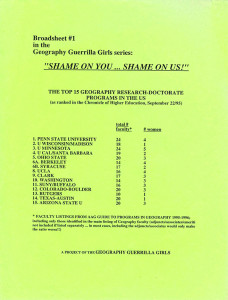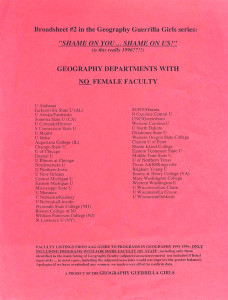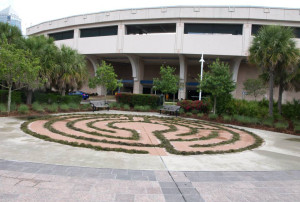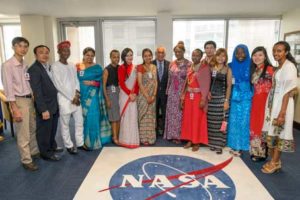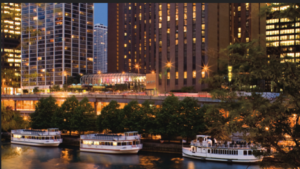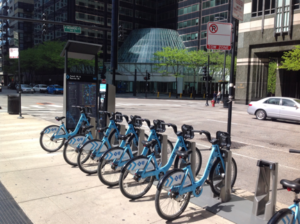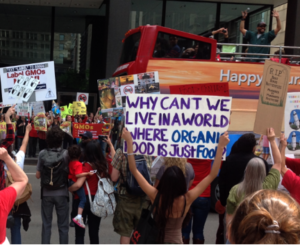Recognizing the Work of Graduate Students
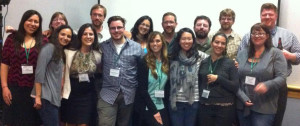 It was a pleasure to open our Spring 2014 AAG council meeting by welcoming our new and first graduate student representative to the table. The council had agreed last year to support the idea of a graduate student representative to council; after all, graduate students comprise around 40% of the AAG membership and so having someone on our governing council that represents their interests seemed a no-brainer. And indeed even in the first few hours (yes, to those uninitiated, council meetings go on, literally, for days!) we began to realize the importance of having the voice of graduate students heard within the not-so-hallow halls of the AAG. The representative raised the important issue of AAG funding for dissertation research, querying our policy of limiting awards to $500; by the end of the meeting, we had agreed to raise that amount to $1000 for a three-year trial period, good news all around. In this column I want to highlight the crucial role that graduate students play in our association, discuss the important academic labor they perform in our departments, universities and discipline, and raise the question of how best to recognize and support that work.
It was a pleasure to open our Spring 2014 AAG council meeting by welcoming our new and first graduate student representative to the table. The council had agreed last year to support the idea of a graduate student representative to council; after all, graduate students comprise around 40% of the AAG membership and so having someone on our governing council that represents their interests seemed a no-brainer. And indeed even in the first few hours (yes, to those uninitiated, council meetings go on, literally, for days!) we began to realize the importance of having the voice of graduate students heard within the not-so-hallow halls of the AAG. The representative raised the important issue of AAG funding for dissertation research, querying our policy of limiting awards to $500; by the end of the meeting, we had agreed to raise that amount to $1000 for a three-year trial period, good news all around. In this column I want to highlight the crucial role that graduate students play in our association, discuss the important academic labor they perform in our departments, universities and discipline, and raise the question of how best to recognize and support that work.
I’m embarrassed to admit it, but I snuck into my first AAG conference. I was a first-year graduate student, and, like many of my fellow grad students (I suspect!) I was not yet a member of the association and wasn’t presenting a paper (see Julie Winkler’s column about the importance of AAG membership, “Why We Join the AAG”). So I simply walked into the conference site and promiscuously wandered through a series of sessions for two days. At the time it wasn’t considered necessary for graduate students to be presenting at our annual conference each year. Flash forward, 30 years later, and the situation for graduate students is decidedly different; most are expected to not only present their research, but publish it, and therefore the importance of giving talks at annual meetings and participating in our association well before their first job letter of application is written is much clearer: networking, professional development, research collaborations, etc. Graduate students are vital to our conference and discipline, totaling approximately 40% of our registrants. They also do an inordinate amount of work in terms of organizing sessions, chairing panels, and helping to run specialty groups. We rely on graduate students’ energy and curiosity, their novel approaches to theory, methods and empirics, and their challenges to the status quo; in turn the conference and the association hopefully provides them an academic home for intellectual and professional development. But I wonder given the multitude of demands on their daily lives and their many contributions to our discipline whether we are doing enough.
The increasing pressures on academic work and workplaces that have accompanied the neoliberalization of the academy are nowhere more apparent than in the lives of graduate students (see Eric Sheppard’s column on the issue of the neoliberal academy, “Geography and the Neoliberalizing Academy”). They must complete rigorous coursework, theses and dissertations; they work as teachers, teaching assistants, research assistants and staff assistants; they must learn how to professionally present their research and publish it; and they have to figure out how to network and organize their professional lives. They also occupy an in-between, or perhaps better stated, a double status: they are students and teachers, apprentices and workers, mentors and advisees. This is a heavy burden, compounded by the fact that most graduate students work under less than ideal conditions: their wages are often barely livable, many have no or limited health coverage and few if any other benefits, and they rarely have a say in the running of their workplace. It is these pressures and conditions that have led many graduate students to unionize; there are now more than 25 universities in the U.S. with unions representing graduate students, including universities with some of the top geography programs.
 It was within this context of students struggling to attain more of a voice in the running of academic institutions, particularly around issues of academic labor, that the Graduate Student Affinity Group (GSAG) of the AAG was formed in the late 1990s. According to the co-founders, geography graduate students working to unionize at their own institutions began to realize that having a platform for voicing their concerns within the AAG was an important step in recognizing and confronting graduate student issues; forming an affinity group seemed the logical move. Two graduate students from the University of Washington filed the papers to form GSAG in 2001, and today the group has over 1,000 members. GSAG organizes plenaries and panels related to student issues, provides travel and research grants, and co-hosts the “Welcome to the AAG” panel, a wonderful gateway for those attending their first national geography conference. Members of the group have also worked closely with AAG staff on projects to support graduate education and training programs like EDGE and GFDA, and they are currently compiling an international directory of all geography graduate student groups. Even with some unique challenges (e.g. their membership pretty much turns over every four years), the affinity group does important work for the discipline, but it is also of course another “job” for graduate students.
It was within this context of students struggling to attain more of a voice in the running of academic institutions, particularly around issues of academic labor, that the Graduate Student Affinity Group (GSAG) of the AAG was formed in the late 1990s. According to the co-founders, geography graduate students working to unionize at their own institutions began to realize that having a platform for voicing their concerns within the AAG was an important step in recognizing and confronting graduate student issues; forming an affinity group seemed the logical move. Two graduate students from the University of Washington filed the papers to form GSAG in 2001, and today the group has over 1,000 members. GSAG organizes plenaries and panels related to student issues, provides travel and research grants, and co-hosts the “Welcome to the AAG” panel, a wonderful gateway for those attending their first national geography conference. Members of the group have also worked closely with AAG staff on projects to support graduate education and training programs like EDGE and GFDA, and they are currently compiling an international directory of all geography graduate student groups. Even with some unique challenges (e.g. their membership pretty much turns over every four years), the affinity group does important work for the discipline, but it is also of course another “job” for graduate students.
It was GSAG members (spurred on by an AAG councilor’s mention that some regional divisions had student members on their board) who asked for representation on the AAG council, and at the Spring 2013 meeting the council voted to approve a non-voting graduate student representative to the council. We might want to consider involving the representative more fully and making them a full-fledged councilor: this would require a vote of the members, but is certainly do-able and perhaps advisable. For now, I’m very happy that we have a graduate student sitting at that big table for those three days, voicing her concerns, providing what are often novel perspectives on the issues in front of us, and raising new issues all together.
I’d love to hear your thoughts on the importance of graduate student representation on the council, on whether we can do more as an association to recognize and support the work they do for us in our departments and universities, and on other matters pertaining to the importance of graduate students to our association, our discipline, and our intellectual and professional lives.
— Mona Domosh


